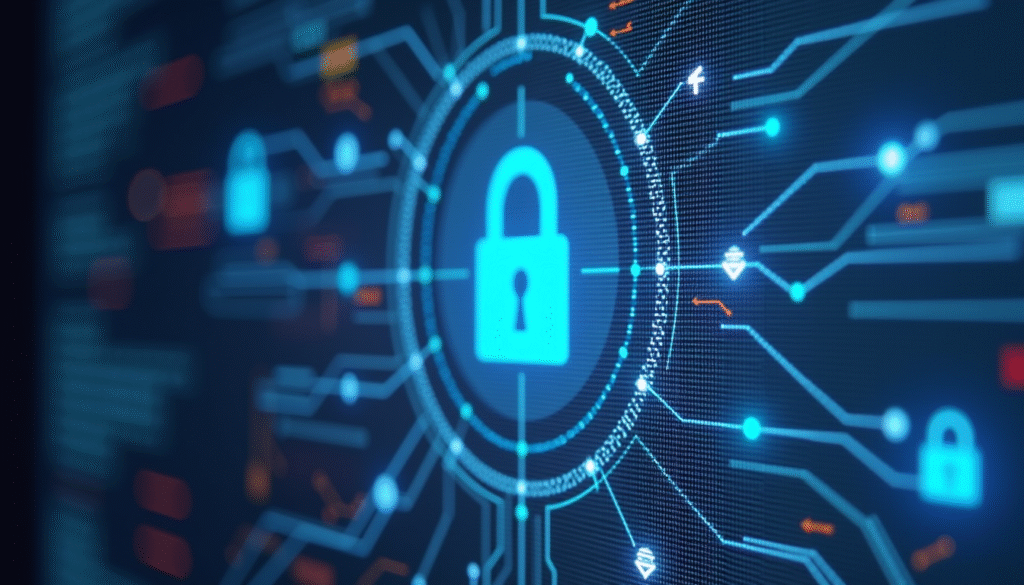
Cybersecurity ITB Introduction Future Security Cybersecurity ITB is a crucial tool for businesses to protect their tech from online threats, ensuring data, networks, and devices are protected from unauthorized access. It provides tools to detect dangers, assess risk levels, and plan for emergencies, making it essential for businesses to stay updated.
Cybersecurity ITB Introduction

Cybersecurity ITB Introduction Future Security Cybersecurity ITB is all about keeping your tech safe from online dangers. That includes protecting data, networks, and all devices from anyone who shouldn’t see or touch them.
Cyber threats change all the time, so ITB gives companies the latest tools and plans to stay safe. Think of software that spots dangers, checks how much risk you actually have, and a plan to follow when something goes wrong.
When a business goes with Cybersecurity ITB, it locks down private data, makes sure the systems work the way they should, and keeps everything running smoothly. Staying current with ITB practices is a must for any business today.
Key Challenges in ITB Cybersecurity

ITB cybersecurity has some big hurdles that companies need to jump over right now:
- Evolving Threats: Attackers are using sharper tools and hitting more often than ever.
- Limited Resources: The number of trained security pros just isn’t keeping up with demand.
- Data Privacy: Keeping sensitive info safe from leaks is a do-or-die job.
- Compliance Requirements: Following all the different security rules is never simple.
- Insider Threats: The biggest danger can come from the very people we trust with the keys.
- Rapid Tech Changes: New devices and software roll outs make spotting weaknesses a race.
By knowing these hurdles, companies can get ready and make their security a whole lot steadier.
Essential Tools and Solutions

Keeping ITB networks safe from cyber threats takes the right blend of tools:
- Firewalls sit at the perimeter, deciding which data can enter or exit and stopping suspicious packets at the door.
- Antivirus Software scans files and running programs for known virus signatures and quarantines them before damage occurs.
- Intrusion Detection Systems (IDS) analyze traffic patterns, sending alerts if anything looks out of the ordinary.
- Encryption transforms unprotected files into scrambled code, so even if cybercriminals steal data, it stays useless.
- Multi-Factor Authentication (MFA) strengthens login security by requiring users to prove identity through passwords, tokens, or biometrics.
- Security Information and Event Management (SIEM) collects data from security devices, running analysis that allows teams to respond to threats as they happen.
When combined, these technologies work in concert, creating multiple layers of defense that protect critical operations in ITB.
Best Practices for ITB Security

To guard ITB systems from cyber risks, follow this straightforward checklist:
- Stay Current: Update all software and operating systems at least monthly. Updates patch security holes.
- Password Smart: Use long, complex passwords and change them every 90 days. Consider a password manager to keep them safe.
- Train Employees: Run short, quarterly training sessions so everyone can spot phishing emails and suspicious attachments.
- Backup Data: Automatically back up key files every day. Store copies both onsite and in the cloud.
- Control Access: Give users the minimum level of access needed. Revoke permissions promptly when someone leaves.
- Monitor Activity: Use security software that scans system logs and network traffic for strange behavior 24/7.
- Have a Playbook: Document step-by-step actions for containing and recovering from breaches, and then practice the drills.
Putting these measures in place helps ITB systems resist attacks and keeps operations running smoothly.
Future Trends in Cybersecurity ITB

The future of cybersecurity in ITB is being molded by technology advances and constant threats:
- Artificial Intelligence (AI): AI is speeding up how quickly we spot and react to attacks.
- Zero Trust Security: We treat every access request as risky; proof is mandatory.
- Cloud Security: As more services move online, we need tighter controls.
- Automation: Smart, automated tools boost how quickly we identify and counter dangers.
- Blockchain: Adopting blockchain helps secure information and confirm transactions.
- Privacy Enhancements: Tougher laws and better tools bolster user data protection.
Following these trends keeps ITB staff ready and lets them secure systems as the landscape keeps shifting.
